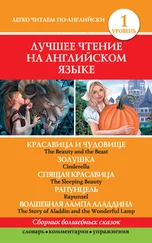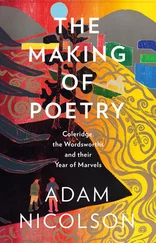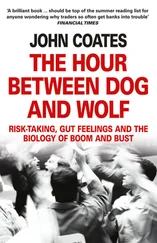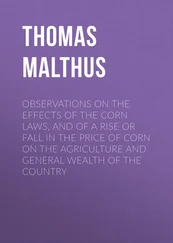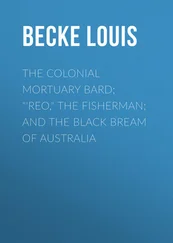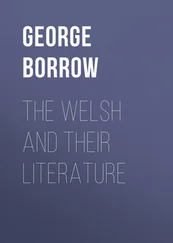Raja Rao - The Serpent and the Rope
Здесь есть возможность читать онлайн «Raja Rao - The Serpent and the Rope» весь текст электронной книги совершенно бесплатно (целиком полную версию без сокращений). В некоторых случаях можно слушать аудио, скачать через торрент в формате fb2 и присутствует краткое содержание. Год выпуска: 2014, Издательство: Penguin Publications, Жанр: Современная проза, на английском языке. Описание произведения, (предисловие) а так же отзывы посетителей доступны на портале библиотеки ЛибКат.
- Название:The Serpent and the Rope
- Автор:
- Издательство:Penguin Publications
- Жанр:
- Год:2014
- ISBN:нет данных
- Рейтинг книги:4 / 5. Голосов: 1
-
Избранное:Добавить в избранное
- Отзывы:
-
Ваша оценка:
- 80
- 1
- 2
- 3
- 4
- 5
The Serpent and the Rope: краткое содержание, описание и аннотация
Предлагаем к чтению аннотацию, описание, краткое содержание или предисловие (зависит от того, что написал сам автор книги «The Serpent and the Rope»). Если вы не нашли необходимую информацию о книге — напишите в комментариях, мы постараемся отыскать её.
The Serpent and the Rope — читать онлайн бесплатно полную книгу (весь текст) целиком
Ниже представлен текст книги, разбитый по страницам. Система сохранения места последней прочитанной страницы, позволяет с удобством читать онлайн бесплатно книгу «The Serpent and the Rope», без необходимости каждый раз заново искать на чём Вы остановились. Поставьте закладку, и сможете в любой момент перейти на страницу, на которой закончили чтение.
Интервал:
Закладка:
‘“The world, my dear, is not a lie, it is an illusion. Besides, tell me, is my body your husband, Radha?”
‘“No, My Lord.”
‘“Is my mind your husband, Radha?”
‘“No, my Lord.”
‘“Then what is it you mean when you say to yourself, ‘Krishna, my husband’.”
‘“Assuredly something beyond the body and beyond the mind — the Principle.”
‘“And tell me, my love, can you possess that, can you possess it?”
‘“No, my Lord, how can I possess the Absolute? The ‘I’ is the Absolute.” And she fell at the Lord’s feet and understood, and lived ever after in the light of the Truth.’
To be free is to know one is free, beyond the body and beyond the mind; to love is to know one is love, to be pure is to know one is purity. Impurity is in action and reaction: what is born must die, what has form must vanish and stink. La Charogne of Baudelaire was a fact; La Charogne was a fact to accept, so that Cézanne could paint the mauve and violent sky of Mont Ste-Victoire. You need not take consolamentum and jump into the fire to be a Cathar, for what are you but a Cathar? Everyone, beyond his body and beyond his mind, is a Cathar. The Ganges dissolves all sin. Even the ashes of the dead that the fire has burnt must dissolve in the Ganges and have absolution.
Sakala kalusha bhangé svarga sopana sangé
Taralata Gangé Devi Gange prasida
Dissolver of blemishes
Companion of the Waters
Dancing and sparkling Ganges I worship.
Benares is everywhere where you are, says an old Vedantic text, and all waters are the Ganges. To realize this is to be a true Cathar. The rest is heresy.
But I had such a tender heart for the Cathars, as I had for the Buddhists, that I felt I must go down south, and see in the light of the Languedoc the truth of this truth, so to say. Yet the Church too had its truth — you must remember what a kind and gentle Christian even Innocent III was. On the other hand, how could one condemn those who, with such beauty in their eyes and their faces lit with a divine conviction, jumped down the precipice at Montségur, or shut themselves up in the caves of Orolac, the Holy Grail in their hands. Death itself to them was life.
The Cathar, the Saint, wants to transform the world in his image — he the supreme anarchist. The sage knows the world is but perception; he is king, he, Krishna the king of kings. The one cannot be many, but the many can be one, and the one thus transcended to its non-dual source, the ekam advayam, the one- not-two is Truth. (In between is the moralist, the Republican of Ferney, with one foot in royalist France, the other in Zwingli’s Switzerland, in the contemplation of the lake, memoryful.) Brother, my brother, the world is not beautiful — you are beauty. Be beauty and see not the beautiful, my Parsifal.
I went down to Montpellier again, to that very lovely arched town of Henri IV, took a room on Boulevard Ledru-Rollin, just off the recurrent aqueduct of Le Peroux. Wandering backwards and forwards through that light and clear air, wandering to Béziers to see the Black Church again, going to Sète to see the Cemetery, taking a train and going to Carcassonne, feeling the earth, and looking at the faces of the men and women of Languedoc, I understood much that no history could say. There was great kindness in the sunshine, a keen perceptivity about the cypresses, the oaks of the garigue; some love had passed by there, that had no name as yet, and had hallowed the land. The minstrelsy of Languedoc had made modern man, as Denis de Rougement explained, and the troubadour was the forerunner of Paul Valéry. The Lady had to be, for the Cemetery of Sete to have meaning. The Mediterranean had to be, for happiness to be. In that sunshine, in the touch of that volcanic earth, man could believe in his own realistic eternity. Greece made life real. Montségur made death real. To believe in death is to commit suicide — the Cathar Bernard Bort refused consolamentum because he thought he could not die: quia non putabat mori. Life that prolongs itself beyond death, beyond all deaths, is orthodox, is the real law. ‘Never at any time am I subject to Death,’ says the Rig Veda. The only real illusion, mrityu, mara, is Death. Man seeks for ever the death of death.
You can live in life and think on death. Can you be in death and think on life? La Charogne proved the soul. Valéry fulfilled Bertrand de Born:
Lumière!… ou toi, la mort!
Instead of life being turned into death, death had to be integrated into life. The cemetery proved the Mediterranean, with its serrated cypresses going upward into the light of the hill, the silly tower of the church, and its empty bell, showed the wide, blue, free Mediterranean was the norm, the reality. The Mediterranean is inclusive of Sete. ‘La mer, la mer toujours recommencée.’
The acrid, crusted Languedoc, did not have the rolling, self-assured sweetness of Provence. The Rhone divided them, blue green, mother Rhone. And where the Rhone met the Mediterranean rose the stub, collected Church of Ste Marie- de-la-Mer, where Marie-Madeleine had landed, and where the gypsies still come to crown their king. Farther away, where the Mediterranean turns inwards, withdraws with an intimate tenderness into the land, and curves again to make the castellated hilltops of Liguria, is Italy; there man believed himself to be whole, and so invented the Paradise where the acorn grows. I had shut myself in, and tried to isolate myself in the present of separated existence. Mother Rhone, sister to Ganga, flowed on the other side. Madeleine’s kingdom was not my world, her trees, virgins, Buddhist pigeons were not of my understanding. I lived among the unicorns. I wrote letters to Madeleine and I had no reply.
The days were filled with many splendid things. As the sunshine had given me an instinct to see, to discover, I went into libraries, families, monasteries and found manuscripts and stories of the Cathars, for Catharism is a very living tradition in the Languedoc; and I marvelled at the sheer magnanimity of their faith. I did not hear from Savithri for a very long time. Then came just a line, sent on by Cooks from Paris: ‘The radar, Rama, has landed the plane where it should. Forgive me. S.’ The Ligurian coast seemed to shine with a greener brilliance than I had ever known before. Paradise, I thought, does, does exist…
One very cold winter evening early in January, when the snow had fallen, and the whole world seemed re-created, I went back to Aix. It was moving to hear the long lamentations of the Marseille streetcars, to smell the rich, soap-like air of the city, and slowly, desperately seek back the hills, the mountains, from which so much sweetness, so much purity once had flowed. The Buddha might have passed there, so cool and tender the landscape looked, and it was as if the stones were but elephants that had knelt, as the Compassionate One passed by, offering their homage, kneeling with their trunks between their legs. The Buddha had touched them, and such was their love of the Lord that ‘Let his touch remain’, they said, and so became stone. And in between the legs of the elephants, where they laid their trunks, little altars were built by the Goths, and then by the Romans and the French, first in adoration of the sun and moon, Apollo, Zeus, and Diana; and then time turned them into chapels of the Virgin, the Mother of God. I could have knelt as the bus swung upwards. Holiness is wheresoever love is.
I entered the Cathedral of St Sauveur and wandered into myself. How such a structure seems to mirror one’s own mystery, the memory of one’s self, the picture of one’s being. The dead live in the towers, they say, and the dead speak in compassion to us. Father, mother, brother, husband, or son: speak, that we bear kindness to one another, that we revere one another, for in death there is no reverence. Death is a shadow, a despair of light.
Читать дальшеИнтервал:
Закладка:
Похожие книги на «The Serpent and the Rope»
Представляем Вашему вниманию похожие книги на «The Serpent and the Rope» списком для выбора. Мы отобрали схожую по названию и смыслу литературу в надежде предоставить читателям больше вариантов отыскать новые, интересные, ещё непрочитанные произведения.
Обсуждение, отзывы о книге «The Serpent and the Rope» и просто собственные мнения читателей. Оставьте ваши комментарии, напишите, что Вы думаете о произведении, его смысле или главных героях. Укажите что конкретно понравилось, а что нет, и почему Вы так считаете.


